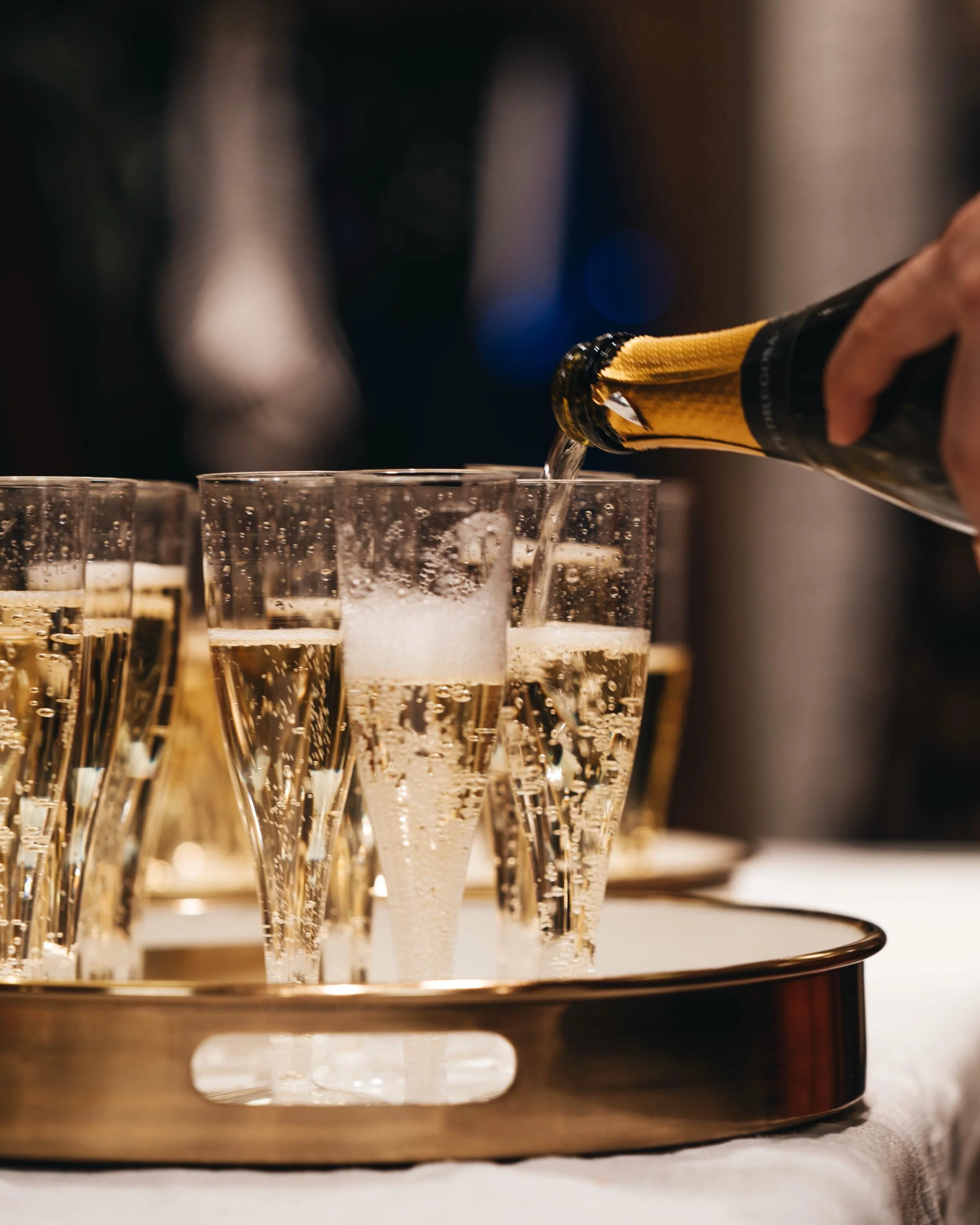A Sip of Champagne?
Photography by Alexander Naglestad
Champagne is the classic choice for toasts and celebrations. TABLE Magazine contributor Celine Roberts offers some helpful tips!
Tradition says that champagne is the bubble of choice for momentous occasions. Before you go and stand in front of a wall of options at your local Fine Wines & Good Spirits, it helps to know a few details about labeling in order to pick your ideal bottle.
While most people have been taught to primarily pay attention to indicators for sweetness (in descending order from least sweet to most sweet: Brut Nature, Extra Brut, Brut, Extra-Dry, Dry, and Doux), that’s not the only thing that affects the flavor of your champagne.
Champagne comes exclusively from the Champagne region in northeastern France and is primarily made from three grapes: chardonnay, pinot noir and pinot meunier. To see what kind of grapes went into a bottle, look for the words “Blanc de Blancs” and “Blanc de Noirs.” Blanc de Blancs (meaning “white from white”) are typically made from a 100% chardonnay while Blanc de Noirs (“white from black”) are made from the dark-skinned grapes varieties of pinot noir and pinot meunier. While each wine will have a unique taste depending on the grower, the soil and the vintage, Blanc de Blancs tend toward lighter and drier, with crisp notes such as apple and lemon. Blanc de Noirs will often have more body and dark fruit flavors such as raspberry and strawberry.
If you can’t find a style listed, it’s safe to assume the bottle was made in the standard blanc style from a blend of all three grapes.
Rosé champagnes have been increasingly popular over the years. Most are made in a standard blanc style with a little bit of red pinot noir or pinot meunier added for color. Adding just a little bit of these reds is meant to bring fruit-forward flavors to the champagne, such as strawberry and raspberry, and add a tart note.
Don’t miss a single delicious thing:
Subscribe to TABLE Magazine here!

